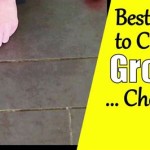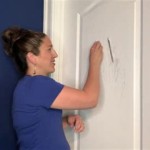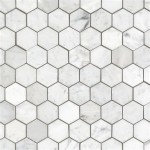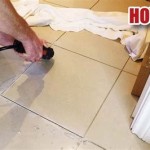Do I Have To Put Cement Board Under Tile? Understanding Tile Underlayment Needs
The question of whether to install cement board beneath tile installations is a common one, particularly for those approaching tiling projects for the first time. The answer isn't a simple yes or no; it depends heavily on the subsurface, the type of tile being installed, and the area where the tiling will occur. Understanding the role of cement board, its benefits, and the alternatives is crucial for ensuring a durable and long-lasting tile installation.
Cement board, a rigid panel composed of cement, reinforcing alkali-resistant fibers, and aggregate, is designed to provide a stable and water-resistant substrate for tile. It differs significantly from drywall (gypsum board), which is porous and prone to deterioration when exposed to moisture. Choosing the right underlayment for tile is crucial for preventing issues down the line, such as cracked tiles, loose grout, and water damage to the underlying structure.
Key Point 1: The Primary Purpose of Cement Board Under Tile
The primary purpose of cement board under tile is to provide a stable, durable, and water-resistant surface to which the tile can be securely adhered. This is particularly important in areas prone to moisture, such as bathrooms, kitchens, and laundry rooms. Here's a breakdown of the key benefits:
Moisture Resistance: Cement board is significantly more resistant to water damage than alternatives like drywall or plywood. While not entirely waterproof, it can withstand prolonged exposure to moisture without deteriorating. This is critical in preventing mold growth and structural damage in wet areas.
Stability and Rigidity: Cement board offers a solid and stable surface that minimizes movement. This is particularly important for larger tiles, which are more susceptible to cracking if the substrate flexes or shifts. The rigidity of the cement board helps to distribute the weight of the tile evenly, reducing stress points.
Bonding Surface: Cement board provides an excellent surface for bonding with thin-set mortar, the adhesive used to set tiles. The textured surface of the cement board allows the thin-set to grip more effectively, creating a stronger and more durable bond than would be achieved on a smoother surface.
Impact Resistance: Cement board is more impact-resistant than other underlayment options. This means it can withstand some level of accidental impact without cracking or crumbling, which can protect the tile installation from damage.
Fire Resistance: Cement board is non-combustible and can provide some level of fire protection. While not intended as a primary fireproofing material, it can help to slow the spread of fire in certain situations.
Understanding these benefits highlights why cement board is often considered the superior choice for tile underlayment, especially in demanding environments.
Key Point 2: When Cement Board is Absolutely Necessary
Several scenarios necessitate the use of cement board under tile. Neglecting to install cement board when required can lead to significant and costly problems.
Wet Areas: As previously mentioned, wet areas like shower walls, shower floors, tub surrounds, and kitchen backsplashes are prime candidates for cement board. The moisture resistance it provides is crucial for preventing water damage. Failure to use cement board in these areas can result in water seeping behind the tile, causing mold, mildew, and deterioration of the wall or floor structure.
Under Heated Floors: When installing radiant heating systems beneath tile, cement board is almost always required. The cement board provides a stable and heat-resistant surface for the heating elements, and the tile will adhere well to the surface. Further, cement board can help to distribute heat more evenly. Other underlayment options may not be able to withstand the heat of these systems or may not provide an adequate bonding surface for the tile.
Unstable Subfloors: If the existing subfloor is unstable or prone to movement, cement board can provide a more rigid and stable surface for the tile. This is particularly important for older homes where the subfloor may have settled or warped over time. In these cases, cement board can be screwed into the subfloor to create a sturdier base for the tile installation. It is, however, important to address the underlying structural issues causing instability before installing any tile or cement board.
Large Format Tile: The use of large format tile is trending, and cement board is essential for providing the necessary support. Large format tile is heavier and more prone to cracking if the substrate is not perfectly level and stable. Cement board provides a rigid, flat surface that minimizes the risk of cracking and ensures a long-lasting installation.
Second Story Bathrooms: Bathrooms located on upper floors are particularly susceptible to water damage. Any leaks that occur in these bathrooms can quickly cause significant damage to the ceiling below. Cement board provides an extra layer of protection against water infiltration, helping to prevent costly repairs.
In any of these situations, skipping the cement board installation is a risky move that can compromise the integrity of the entire tile project.
Key Point 3: Alternatives to Cement Board and Considerations
While cement board is often the best option, alternative tile underlayments are available. However, you should cautiously evaluate each before making a decision.
Waterproof Membranes: In some cases, a waterproof membrane can be applied directly to the existing subfloor. These membranes create a barrier that prevents water from penetrating, but they don't necessarily provide the same level of stability as cement board. These are often used in conjunction with cement board, especially on shower floors, to provide an additional layer of protection.
Self-Leveling Underlayment: Self-leveling underlayment (SLU) is a cement-based mixture that is poured over the subfloor to create a perfectly level surface. While SLU can improve the flatness of the subfloor, it doesn't offer the same level of moisture resistance as cement board. SLU may still require a waterproof membrane or cement board before tiling, especially in wet areas.
Plywood: Plywood can be used as an underlayment for tile in some dry areas, but it is generally not recommended for wet areas. If it gets wet, plywood can warp, rot, or delaminate, leading to tile failure. If you choose to use plywood, make sure it adheres to all standards and regulations in your area. Plywood is not typically recommended for use in wet areas.
Existing Tile: It is possible to tile over existing tile, but this is not always the best option. The existing tile must be in good condition, level, and securely attached to the subfloor. If the existing tile is loose or damaged, it must be removed before installing the new tile. In addition, the existing tile must be properly prepared to provide a good bonding surface for the new tile. Consideration must be given to the added height this will create.
Drywall: Drywall is never an acceptable underlayment for tile in wet areas. Drywall is porous and will quickly deteriorate when exposed to moisture. Even in dry areas, drywall can be too flexible to provide adequate support for tile. The use of drywall as a tile underlayment will almost always result in tile failure.
Considerations: When choosing an alternative to cement board, carefully consider the specific requirements of the project. Factors to consider include the location of the tile installation, the type of tile being used, the condition of the existing subfloor, and the local building codes. Consult with a qualified tile installer or contractor to determine the best underlayment option for the situation.
Ultimately, the decision of whether to install cement board under tile depends on a number of factors. Understanding these factors and carefully evaluating the alternatives can help ensure a successful and long-lasting tile installation.

How To Install Cement Board On A Floor Diy Family Handyman

Thinset Under Cement Board Yes Or No Ord Ceramic Tile

How To Install Hardiebacker Cement Board On Floors James Hardie Pros

Cement Backerboard Floor Tile Installation Uncookie Cutter

Cement Board Installation On Floors 5 Mistakes To Avoid Diytileguy

How To Install Cement Board The Home Depot

Installing Cement Backerboard For Tile Flooring Hometips

How To Install Cement Board For Tile Projects Diy Family Handyman

Drywall To Backerboard Transition In Tiled Showers The Floor Elf

Tile Installers Select Hardiebacker Cement Board As Most Preferred Brand 2024 02 22 Stone World
Related Posts








